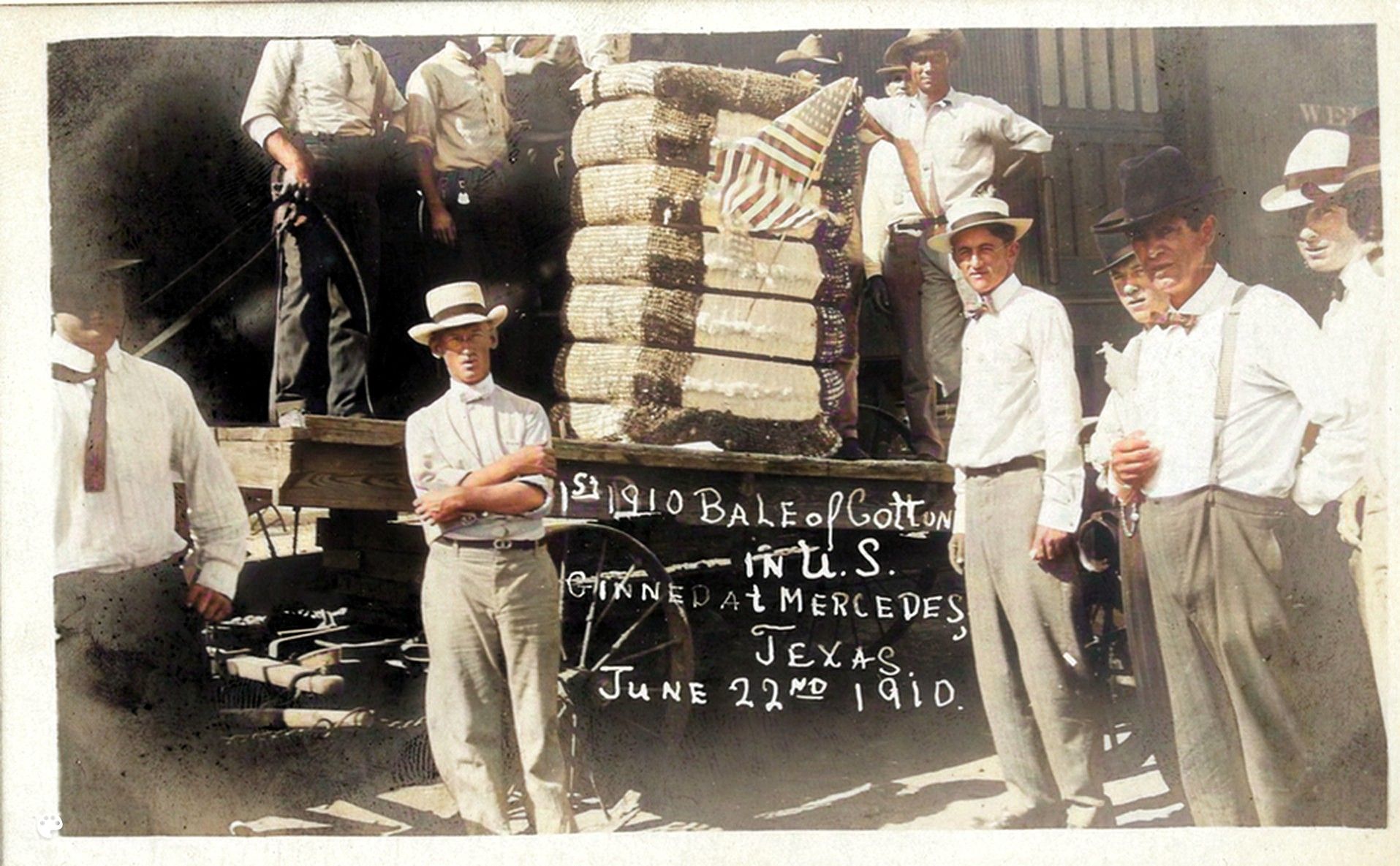 U001
Mercedes Produced The First Bale in the United States 1910
U001
Mercedes Produced The First Bale in the United States 1910
During the early 1900s, Hidalgo was consistently a top cotton producing county in Texas. Mercedes frequently ginned the first cotton brought to market for the season, resulting in the highest prices for the farmers. An article about Rio Grande Valley agriculture stated 'cotton acreage peaked in 1951 after a January freeze nearly wiped out citrus...Officially, the acreage was 880,700 acres, but some estimate it closer to 1 million acres...Lately, cotton averages about 100,000 acres. And the number of active gins has declined from 107 gins in 1952 to about 10 today...Poor market prices and the higher cost of cotton production in the U.S. as compared to China and other countries have forced many Rio Grande Valley farmers to change the crops they grow.' [1]
View Enlarged
View Library
 L010
Stokely Brothers Fruit and Vegetable Company Moved into Unused Power Plant 1940
L010
Stokely Brothers Fruit and Vegetable Company Moved into Unused Power Plant 1940
In the 1940s, Stokely Brothers Fruit and Vegetable Canners and Growers moved into the old Mercedes Power Plant. The company eventually became Stokely-Van Camp, which manufactured frozen foods and developed Army C rations during WWII. Stokely-Van Camp later acquired the rights to produce and market Gatorade. [34]
To the left, two trucks are loading grapefruit onto a conveyor belt. The unused Mercedes Power Plant smokestack is on the far left. Look closely at the main door to see workers carry boxes into the building and three men standing in a truck bed.
View Enlarged
View Library
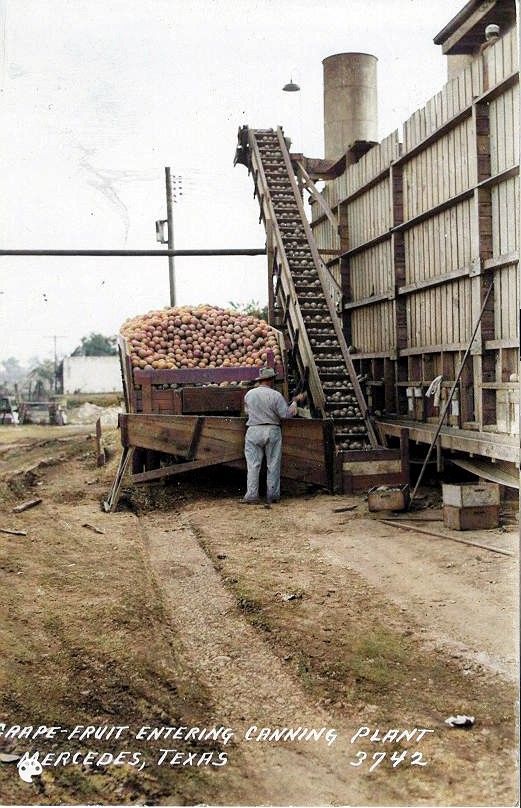 L011
Loading Grapefruit for Processing at Stokely Brothers Plant in Mercedes 1940
L011
Loading Grapefruit for Processing at Stokely Brothers Plant in Mercedes 1940
Grapefruit being loaded onto conveyor belt into Stokely Brothers plant. The Stokely Brothers had plants throughout the United States. Grapefruit originated as a natural hybrid between a Jamaican sweet orange and the Indonesian pomelo. In 1929 a Texas citrus grower discovered a mutated red grapefruit growing on a pink grapefruit tree, which became the Ruby Red variety. [1][24]
Stokely-Van Camp is the successor to Van Camp Packing Company, an Indianapolis packer founded in 1861, and Stokely Brothers and Company, a Newport, Tennessee, canning firm founded in 1898. The Stokely Brothers plant in Mercedes operated for 50 years, from about 1940 to 1990. The old Power Plant building that it occuppied still stands toda at the southwest corner of 2nd Street (old 83) and the Main Canal.
View Enlarged
View Library
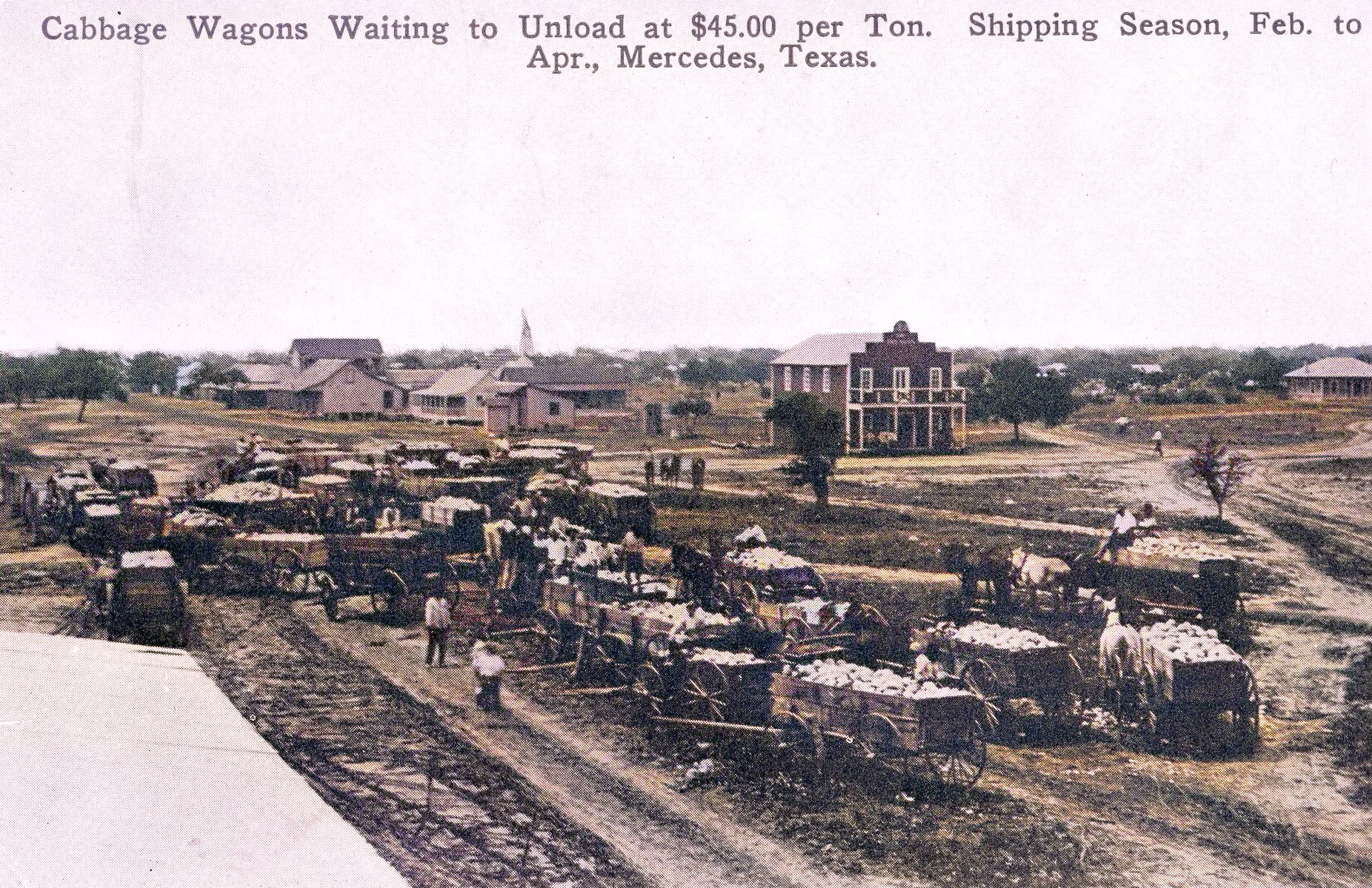 A002
Cabbage Wagon Waiting at Train Station for Shipping 1909
A002
Cabbage Wagon Waiting at Train Station for Shipping 1909
The image shows around 20 horse-drawn wagons loaded with cabbages, waiting to be transported to market on a muddy, unpaved road near the Mercedes Train Station. According to the card inscription, the market price for cabbage was $45 per ton at the time, and the shipping season was from February to April. The Rio Grande Valley had a year-round growing season, but transportation to Northern markets was limited because produce would spoil. Cabbage and onions, which could be transported long distances without refrigeration, were the first winter vegetable crops cultivated in the valley. Refrigerated rail cars became more widely available in the 1920s, and refrigerated trucks in the 1930s, allowing Mercedes farmers to produce and market a wider variety of fruits and vegetables. [1][24]
View Enlarged
View Library
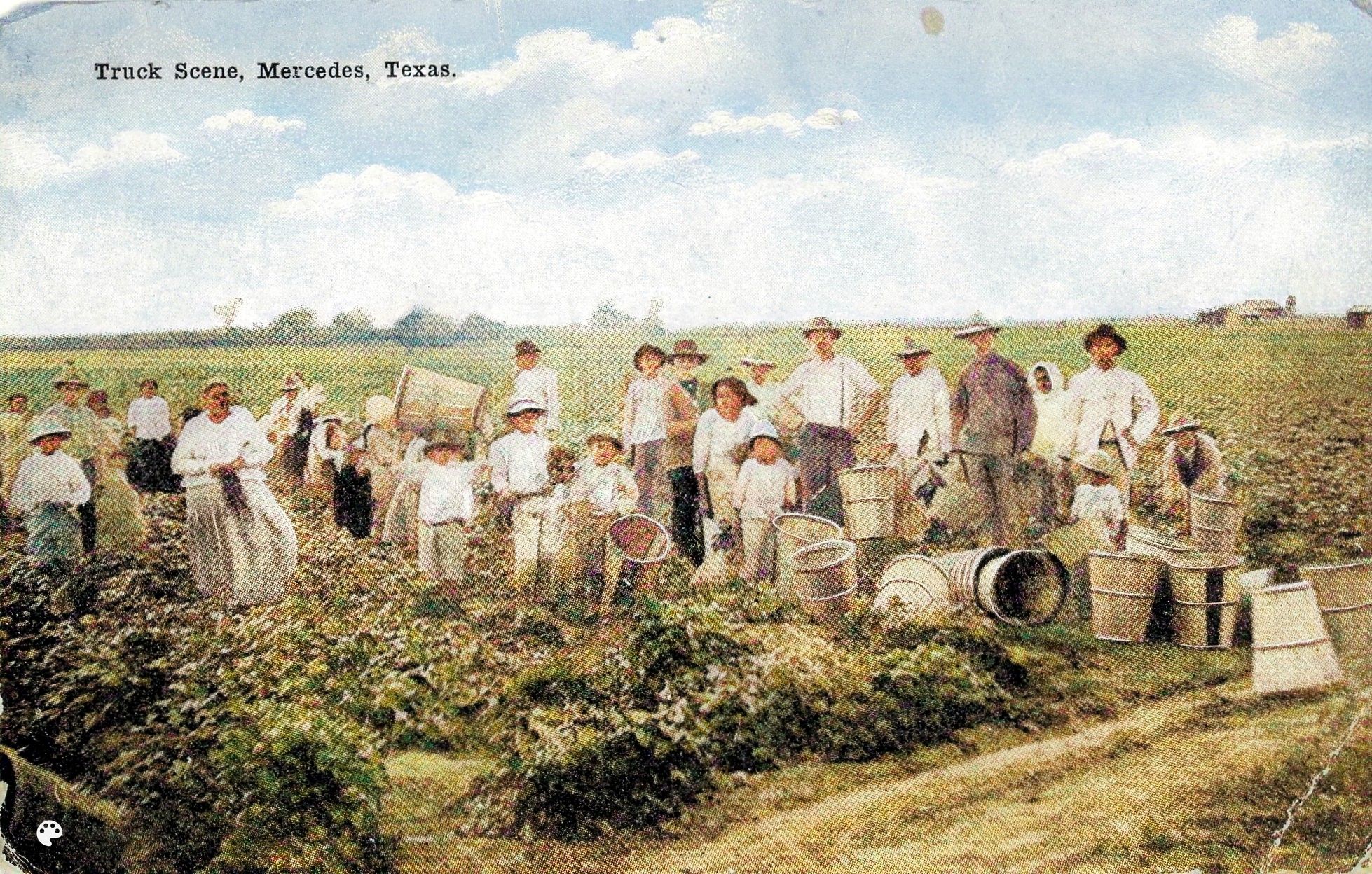 N003
Vegetables Were Grown in Mercedes During Winter Months 1916
N003
Vegetables Were Grown in Mercedes During Winter Months 1916
Agricultural workers picking vegetables into bushel barrels on a Mercedes farm. One of the advantages for Valley farmers was the dual growing season which allowed cotton production in the summer and fruit and vegetable production during the cooler months. According to Dr. Jose Amador, Texas Agricultural and Mechanical College, A mild climate provided a year-round growing season that allowed for all kinds of crops to be grown here, but the mainstays have been vegetables, citrus, sugarcane, cotton and grains.[1]
View Enlarged
View Library
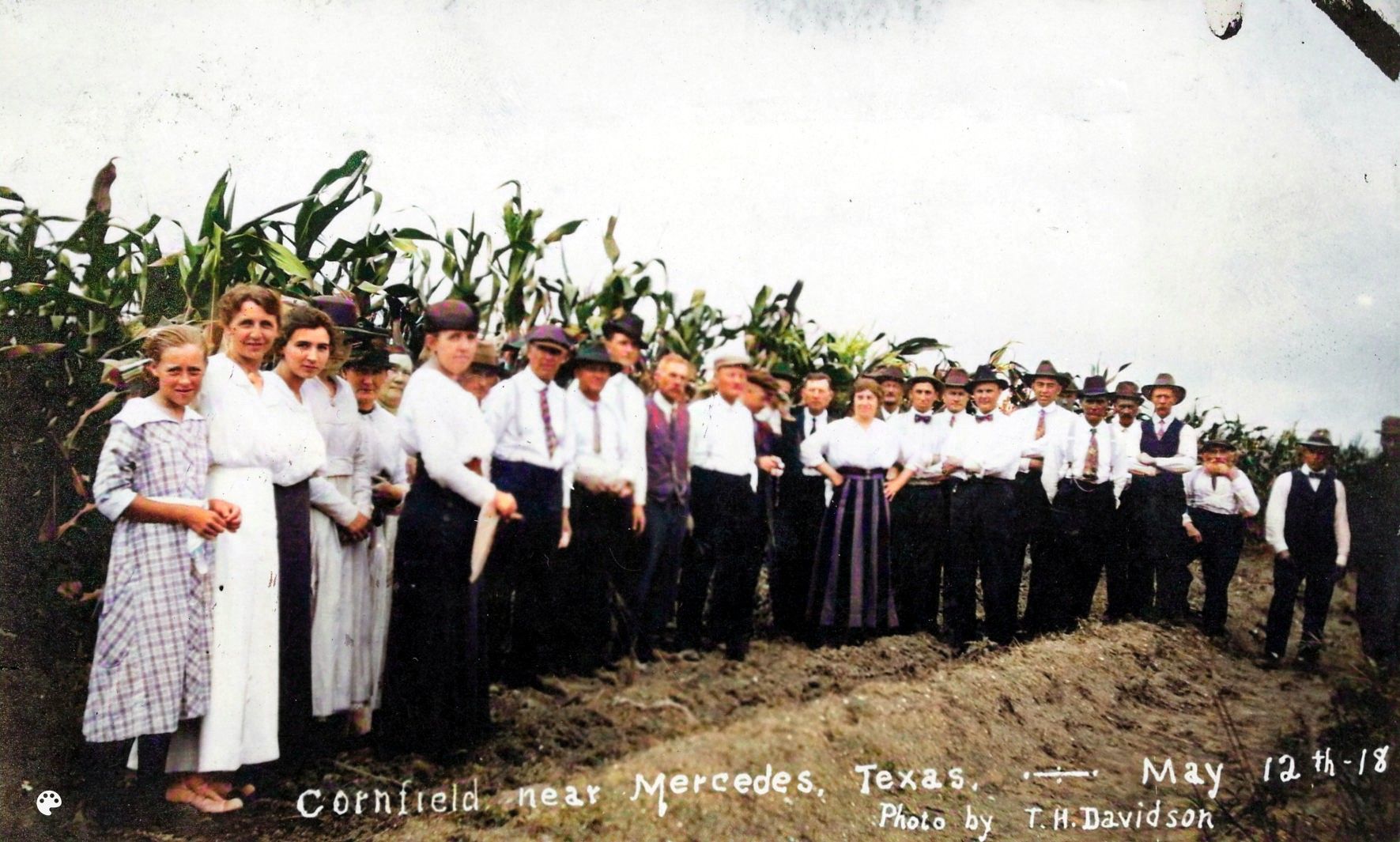 T001
Potential land buyers in cornfield near Mercedes 1918
T001
Potential land buyers in cornfield near Mercedes 1918
Large group of adults and children standing in field of tall corn. It is not clear whether they are the farmers or potential land buyers touring local farms. During the early 1900s development companies purchased large tracks of acreage and promoted Mercedes by luring northern settlers to the area with extensive publicity campaigns. They also transported prospective buyers to the area via railroad and gave them whirlwind tours of the surrounding Rio Grande Valley area. [26]
View Enlarged
View Library
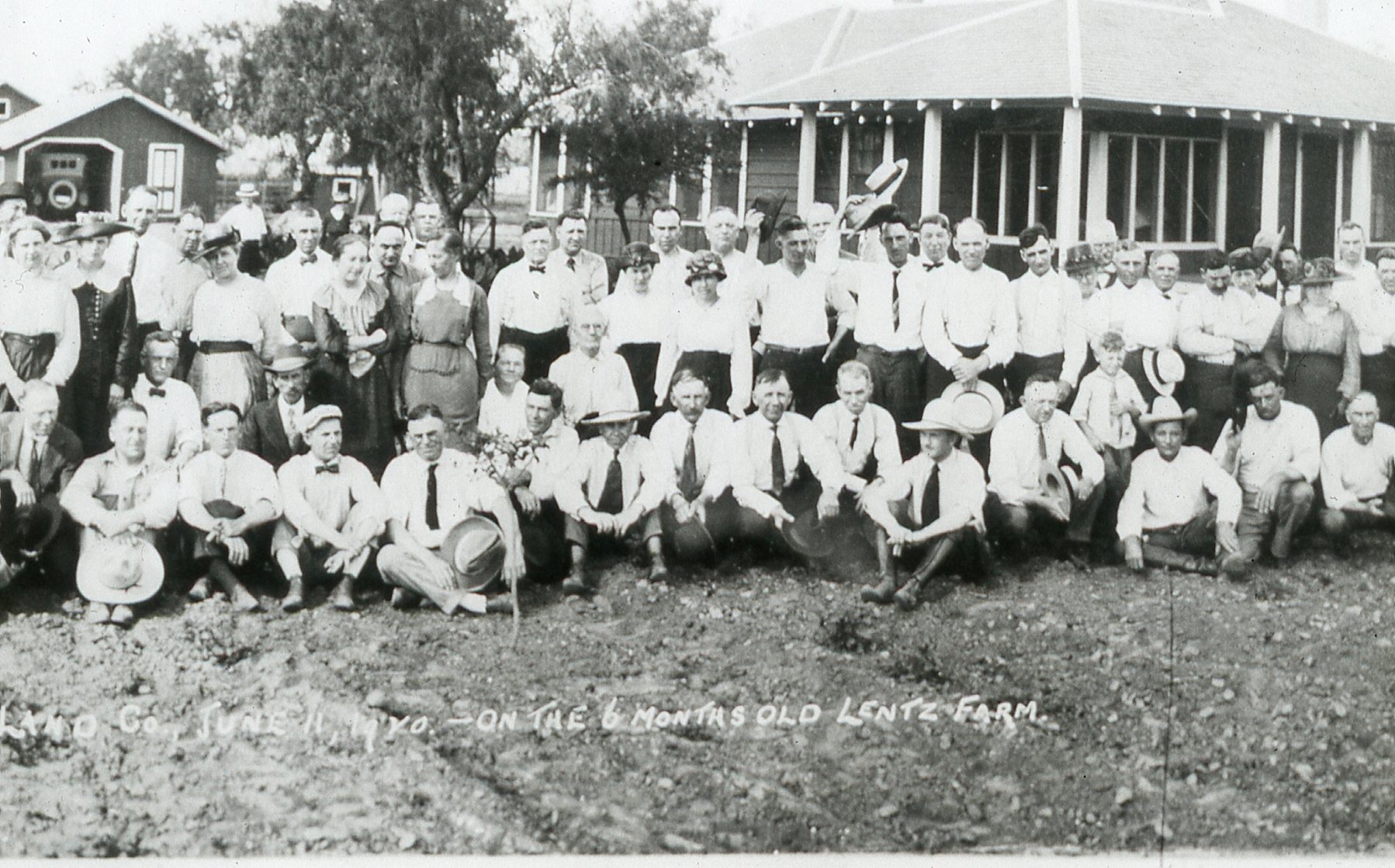 W012
Photograph of Lentz Farm Excursion Party 1920
W012
Photograph of Lentz Farm Excursion Party 1920
Prospective land buyers on the Lentz farm Stewart excursion party. The party of well dressed men and women is pictured by the Lentz homestead farmhouse. Some of the men are tipping their hats. the photograph caption reads 'On the 6 month old Lentz farm.'
View Enlarged
View Library
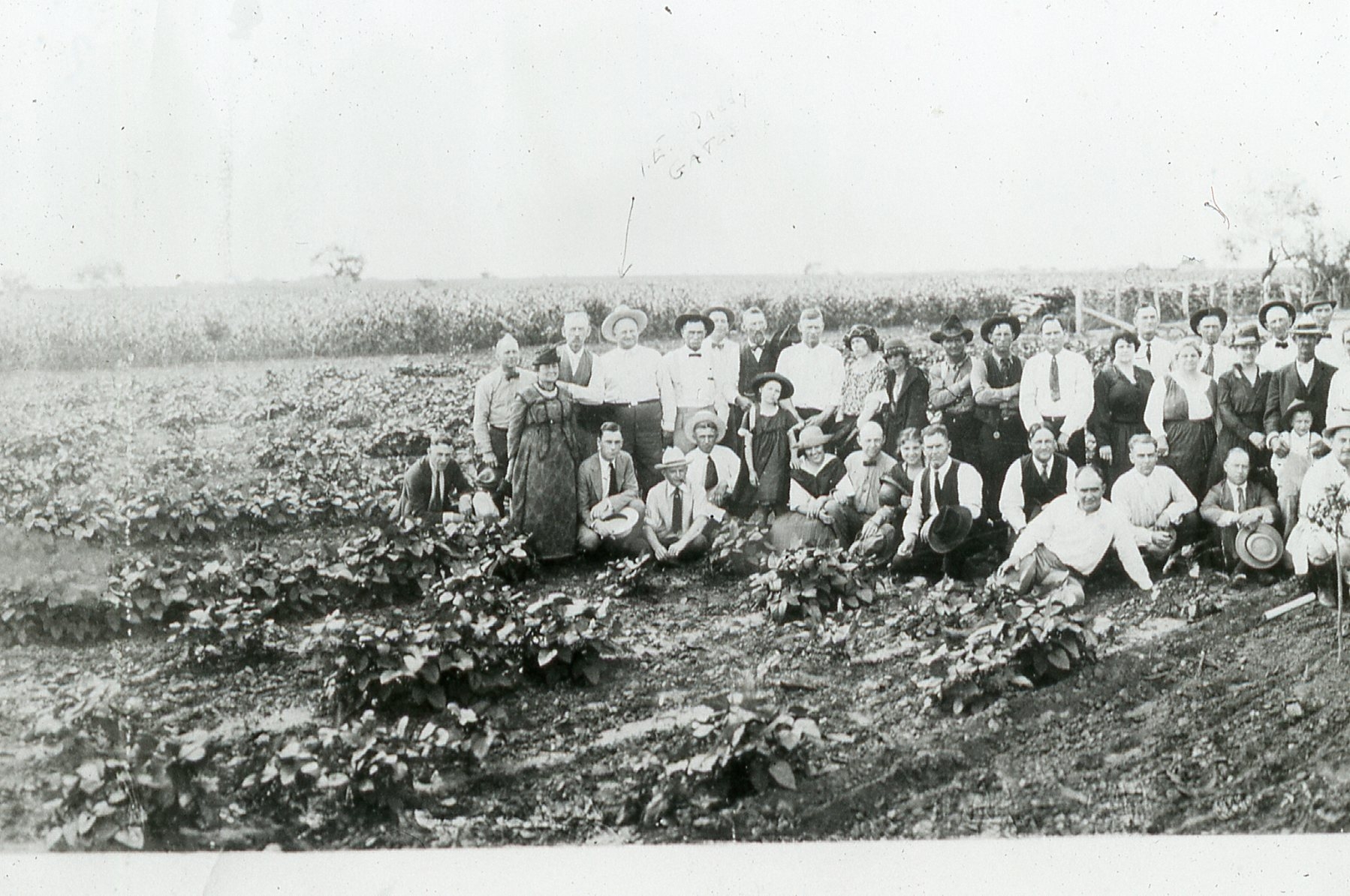 W009
Photograph of Lentz Farm Excursion Party 1920
W009
Photograph of Lentz Farm Excursion Party 1920
The Lentz farm Stewart excursion party posing in the fields of the Lentz homestead in Mercedes. The crop appears to vegetables which were grown in the winter in the Rio Grande Valley. Men are wearing white shirts and ties and women are wearing dresses.
View Enlarged
View Library
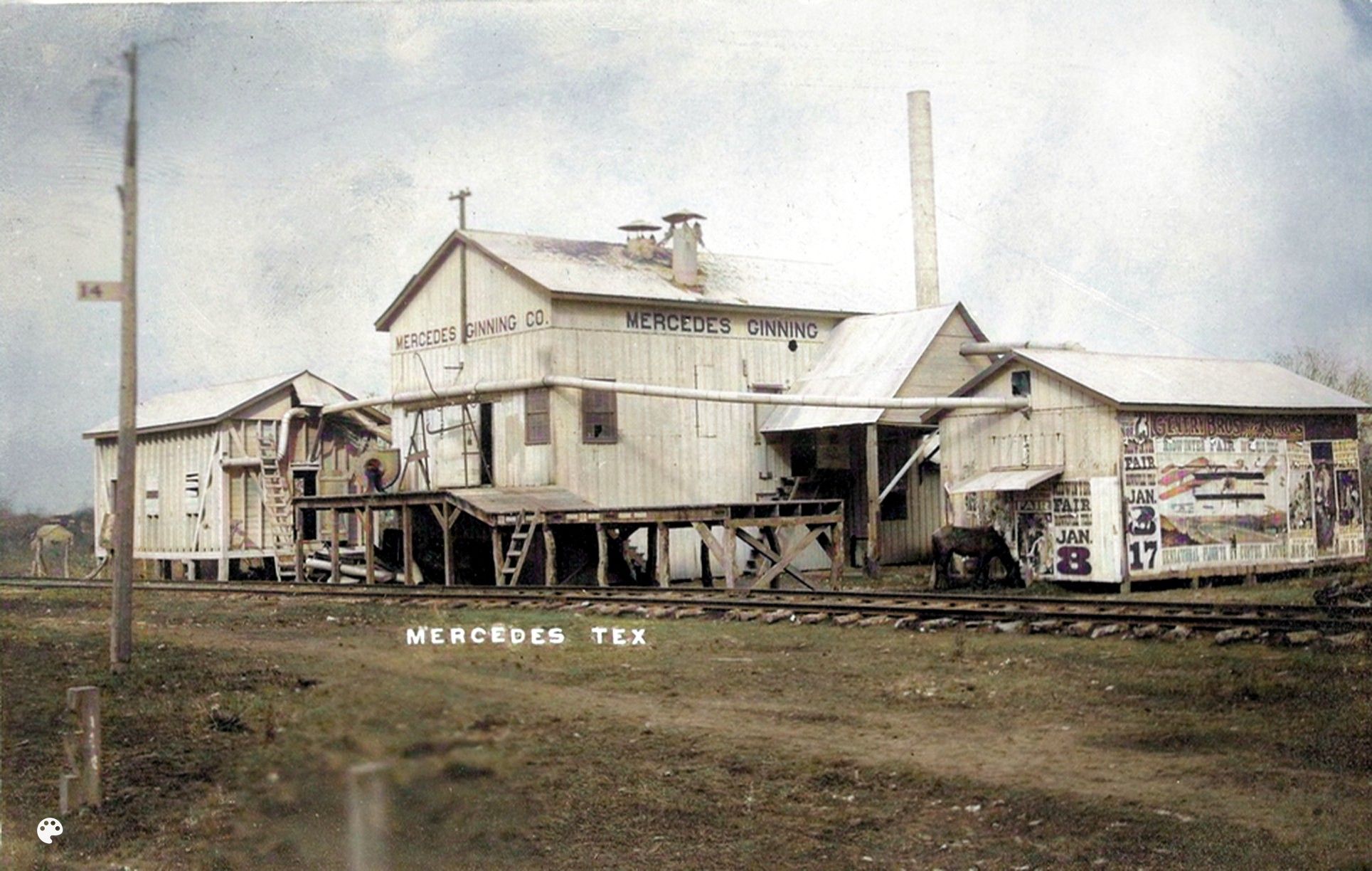 U005
Mercedes Ginning Company Was Located at Old 83 and Main Canal 1916
U005
Mercedes Ginning Company Was Located at Old 83 and Main Canal 1916
This postcard shows a complex of buildings including Mercedes Canning Company and Mercedes Cotton Ginning. The smokestack in the distance is at the Mercedes Power Plant. These production plants were located adjacent to the railroad for ease in shipping. At one time there were three cotton gins in Mercedes and ginning season in late summer was a busy time.
Note that there are interesting posters advertising a fair from January 8 to 17. One of the posters has a picture of any early airplane, so perhaps the fair featured an aerial show. It is not clear whether this complex of buildings is standing today. They may be among the building at the Water Treatment Plant on Illinois Street.
View Enlarged
View Library
 L018
Crop Dusters Spray Insecticides on Citrus Orchards near Mercedes 1940
L018
Crop Dusters Spray Insecticides on Citrus Orchards near Mercedes 1940
The postcard depicts an agricultural aircraft, commonly known as a crop duster, flying over a citrus orchard. The white cloud trailing the plane is a stream of insecticide. Crop dusting was first used in the Rio Grande Valley in 1928. After World War II, thousands of pilots were released from the military. Many wanted to continue flying, but few had airplanes. Some innovative pilots started aerial crop dusting businesses, which grew rapidly. Lloyd Nolen of Mercedes was one of them, running his business out of Central Valley Airport outside of Mercedes. Crop dusting became widely utilized for pest control in Valley orchards and fields. [79]
View Enlarged
View Library
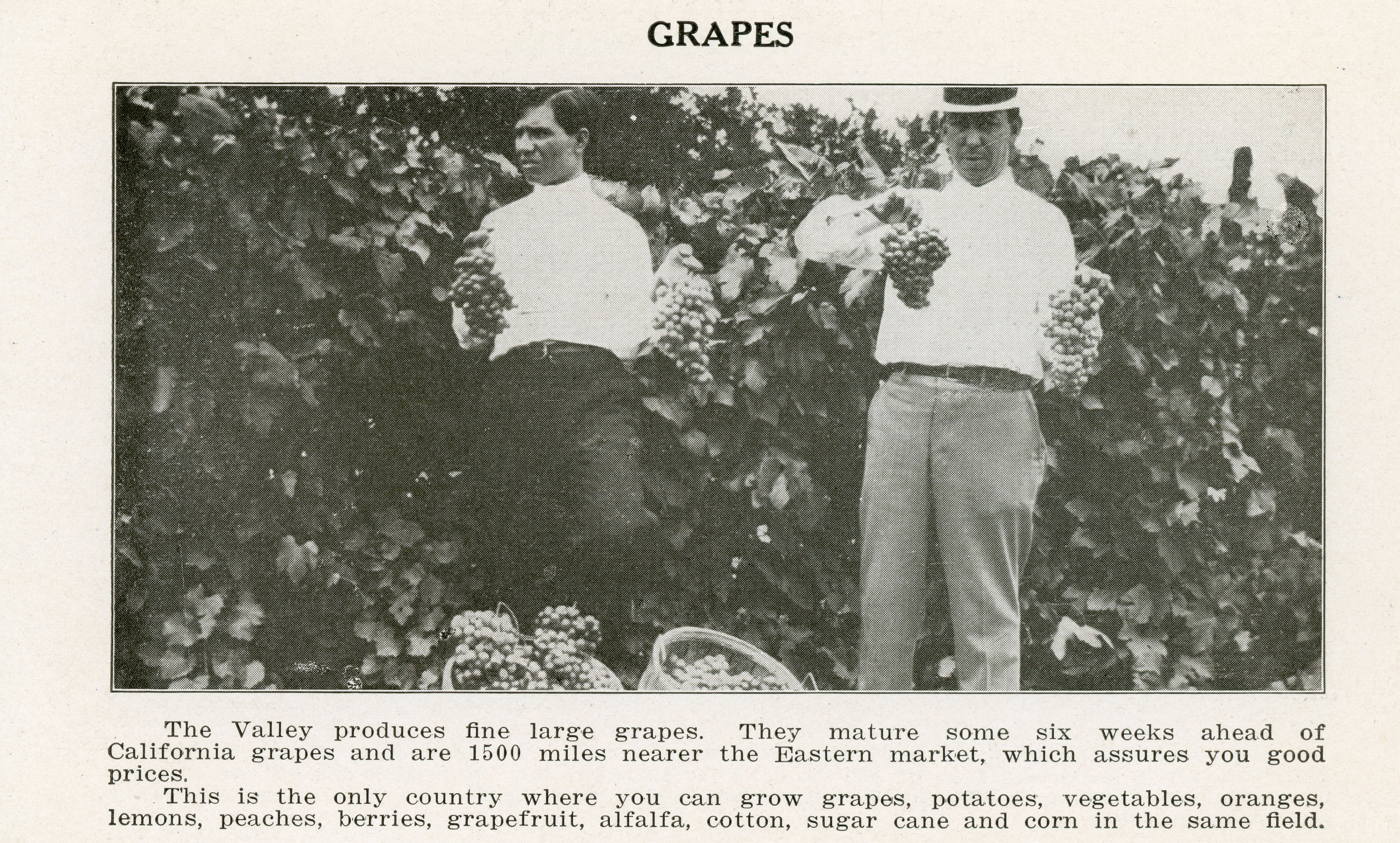 Q013
Promotional Brochure Lures Farmers to the Mercedes to Grow Grapes 1916
Q013
Promotional Brochure Lures Farmers to the Mercedes to Grow Grapes 1916
The W. E. Steward Land Company was one of several land development companies in the Mercedes area. The company brochure claimed that the Valley produces fine, large grapes that mature six weeks ahead of California grapes and are 1,500 miles closer to the Eastern market, which assures farmers of good prices.
It also claimed the Valley is the only place in the country where grapes, potatoes, vegetables, oranges, lemons, peaches, berries, grapefruit, alfalfa, cotton, sugar cane, and corn can be grown in the same field. Like many land developers, the W. E. Steward Land Company exaggerated these points to attract farmers. [35]
View Enlarged
View Library
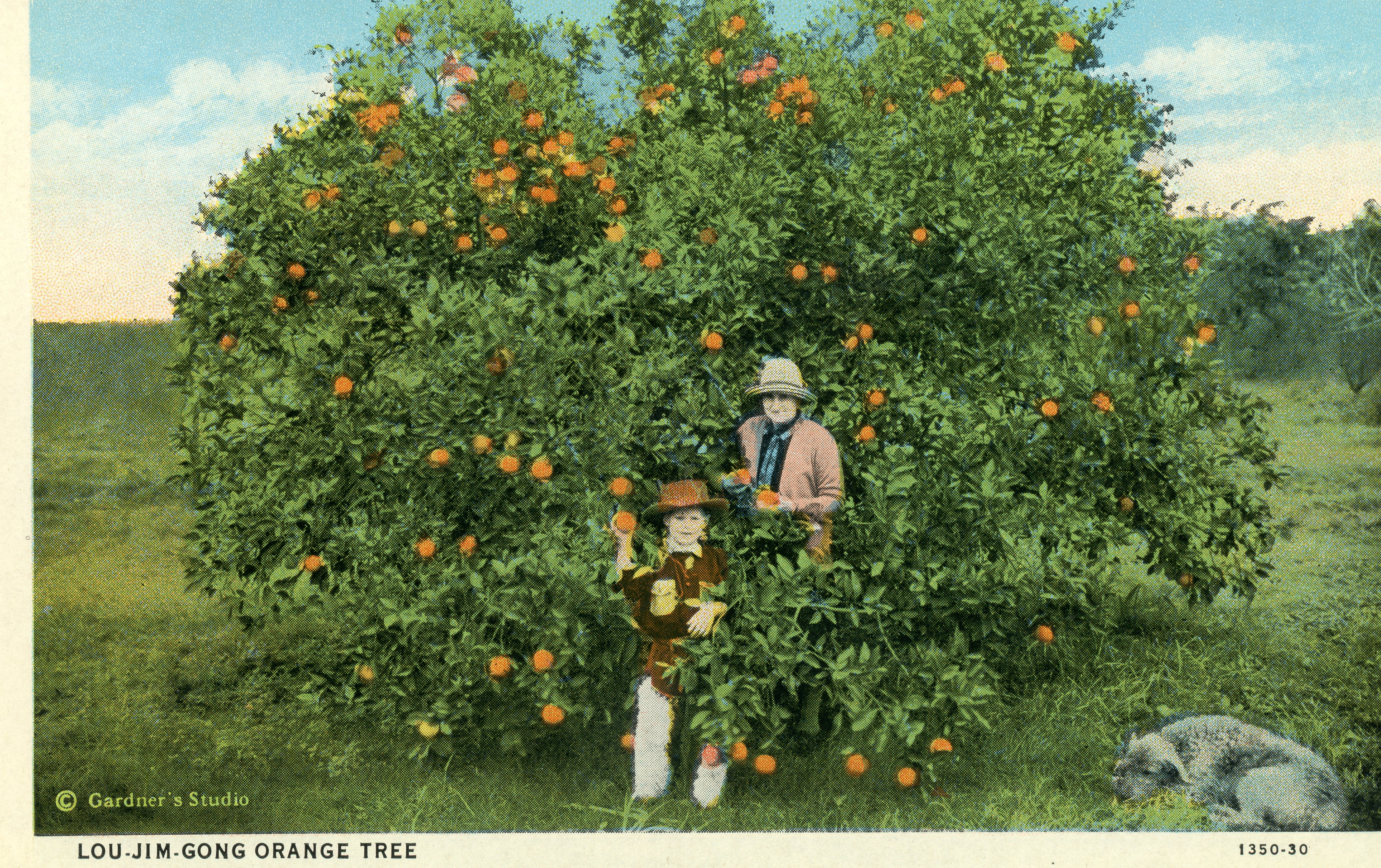 U016
Woman and Boy Standing Lue Gim Gong orange tree 1940
U016
Woman and Boy Standing Lue Gim Gong orange tree 1940
The earliest record of citrus in the Lower Rio Grande Valley is of seedling orange trees planted by Don Macedonio Vela at the Laguna Seca Ranch in 1882. Limited acreages of citrus were established in the Mercedes and the RGV in the late 1920s and into the 1930s. This marked the beginning of the Texas citrus industry, which reached a peak of more than 100,000 acres in the 1940s. The varieties of citrus that originated in the Valley established Texas' reputation for quality citrus production. [80]
View Enlarged
View Library
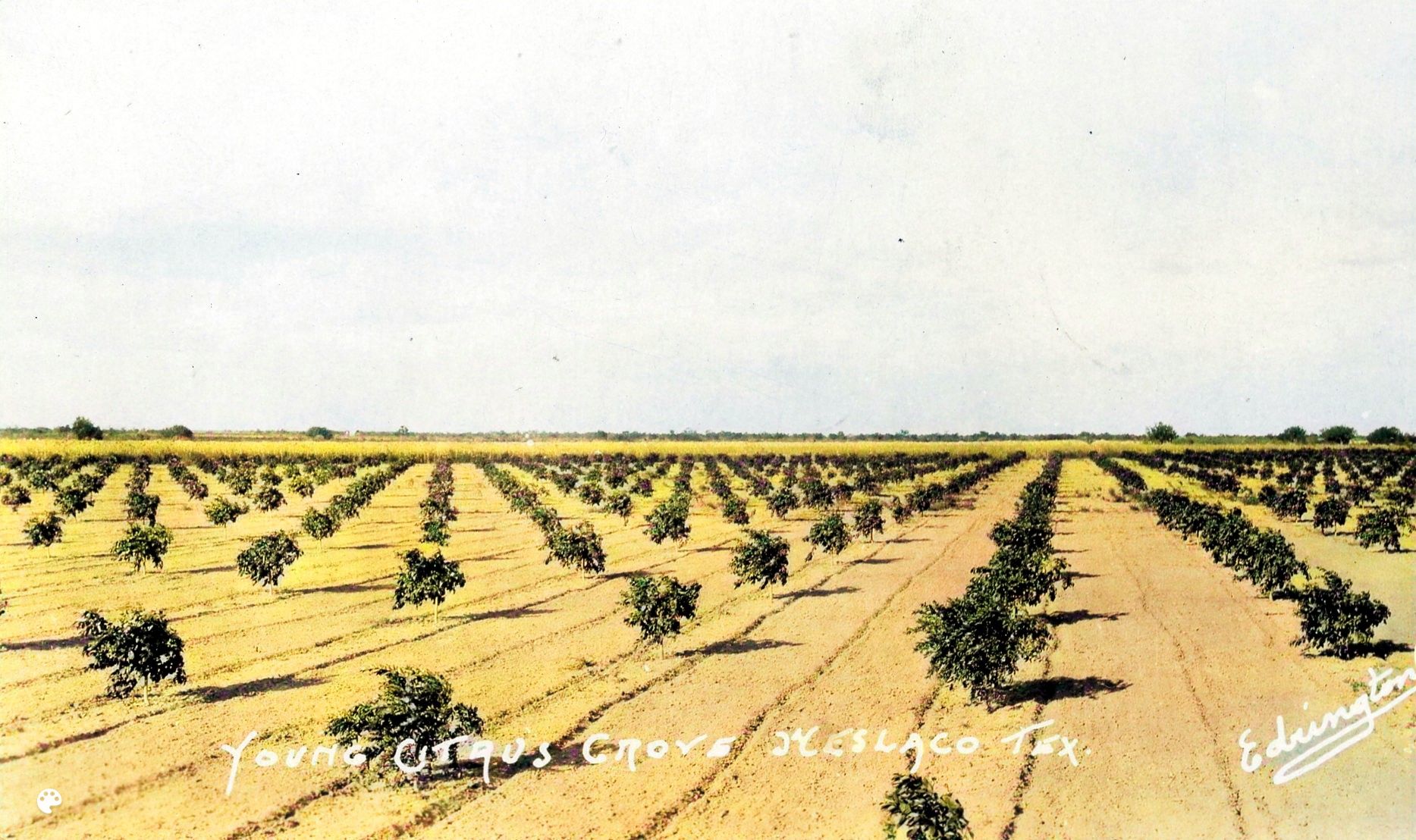 O001
Citrus Trees Take Five Years to Mature and Produce Fruit 1937
O001
Citrus Trees Take Five Years to Mature and Produce Fruit 1937
It takes about 5 years for a citrus tree to begin producing fruit. Once the tree finally begins producing fruit, they about 6 months to ripen. The Texas citrus industry is mostly in the Lower Rio Grande Valley, with about 85 percent of the acreage in Hidalgo County.
The major limiting factor in Texas citrus production is the risk of freeze damage. Citrus fruits easily freeze at 26 to 28 degrees when these temperatures occur for several hours. The costs of replanting citrus orchards following a freeze are accentuated by the costs of recapturing markets lost to competing areas during freeze recovery. [1][24]
View Enlarged
View Library












